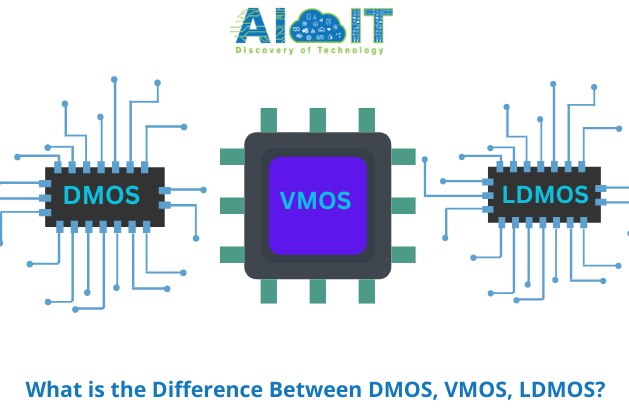Power Amplifiers are necessary components in electronic systems, such as wireless communication and consumer electronics. The choice of power amplifier technology can significantly impact system performance, efficiency, and cost.
There are three major types of power amplifiers – DMOS, VMOS, and LDMOS. These three are the types of Metal-Oxide-Semiconductor Field-Effect Transistors (MOSFETs), which are widely used in power electronics and switching applications.
In this blog, we will dive deep into the key differences between these technologies and help you make an informed decision when selecting the right power amplifier for your application.
Do you know: How to Reduce the Costs of Network Management?
What is DMOS (Double Diffused MOSFET)?
DMOS is a type of metal-oxide-semiconductor field-effect transistor (MOSFET) that utilizes two diffusion processes to achieve high input and output impedance.
The first diffusion process forms the source and drain regions, while the second diffusion process forms the body of the MOSFET. Due to the DMOS’s extensively doped body, it conducts electricity more readily and resists heat flow better.
Also, due to their low cost and simple design, DMOS power amplifiers are frequently used in low-power applications like audio amplifiers. The low breakdown voltage and weak power handling capabilities of the MOSFETs, however, put a restriction on their performance.
What is VMOS (Vertical MOSFET)?
VMOS is a type of MOSFET that is designed with the channel running vertically from the source to the drain. This design allows for a larger channel area, which increases the power-handling capability of the VMOS. In addition, the vertical design reduces parasitic capacitance and resistance, improving efficiency and performance.
High-power applications, like RF power amplifiers, often use VMOS power amplifiers. They have high power handling capability and improved efficiency compared to DMOS power amplifiers.
However, the increased complexity of the design and higher cost make VMOS power amplifiers less suitable for low-power applications. Hence, due to its high cost, there are plenty of VMOS alternatives present in the market.
Also know: How An AWS Multi-Region Architecture Can Strengthen DR?
What is LDMOS (Lateral Double Diffused MOSFET)
LDMOS is a type of MOSFET that utilizes two diffusion processes to achieve high input and output impedance, similar to DMOS. However, the channel of the LDMOS runs laterally from the source to the drain, rather than vertically.
This design allows for a larger channel area, which increases the power-handling capability of the LDMOS. In addition, the lateral design reduces the gate-to-source capacitance, improving efficiency and performance.
Both low-power and high-power applications, such as wireless communication, often use LDMOS power amplifiers. They have high power handling capability, improved efficiency, and cost-effectiveness compared to VMOS power amplifiers.
Key Differences between DMOS, VMOS, and LDMOS
Below is a summarized difference between VMOS, DMOS, and LDMOS.
- Power Handling Capability: VMOS and LDMOS have higher power handling capabilities compared to DMOS, making them more suitable for high-power applications.
- Efficiency: VMOS and LDMOS have improved efficiency compared to DMOS, which is critical in high-power applications.
- Cost: DMOS power amplifiers are the most cost-effective, while VMOS power amplifiers are the most expensive. LDMOS power amplifiers offer a good balance between cost and performance.
- Design: DMOS power amplifiers are simple in design, while VMOS and LDMOS power amplifiers are more complex.
- Application: DMOS power amplifiers are best suited for low-power applications, such as audio amplifiers, while VMOS power amplifiers are best suited for high-power applications, such as RF power amplifiers.
Also read: Standard Form of IT Procurement Contracts
Conclusion:
To sum up, there are three different MOSFET types: DMOS, VMOS, and LDMOS, each of them is made to manage a particular power need. When selecting a MOSFET, it is important to consider the specific requirements of the application, such as voltage level, current level, power handling, and on-resistance. With the right selection, a MOSFET can provide reliable and efficient power control for various applications.

